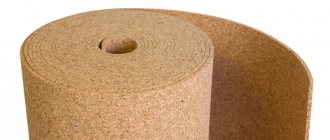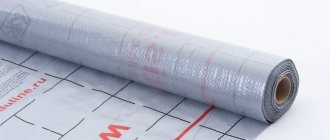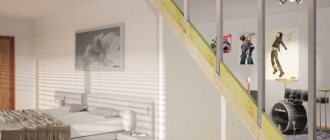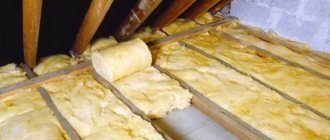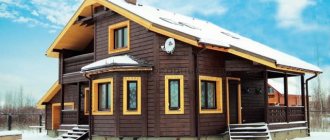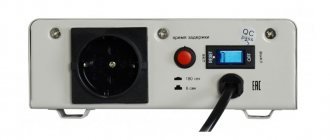Criterias of choice
When deciding which insulation is the cheapest in Moscow, it is easy to make a choice in favor of the optimal material, since the specialized market is replete with budget offers. In each specific case, priorities should be determined taking into account the potential of thermal insulation products and related nuances. Among the criteria for choosing inexpensive insulation, the following points are noted:
When choosing a budget insulator, special attention is paid to such operational characteristics of the product as:
Conclusions and useful video on the topic
To avoid common mistakes when choosing materials for insulation, we recommend watching the following videos:
With all the variety of available materials and insulation methods, you can always choose the most suitable one. Despite the fact that some work seems easy to perform, it is still better to entrust it to experienced builders and heating engineers.
Would you like to talk about how you selected insulation for furnishing your own country house? Do you have information that will be useful to site visitors? Please write comments, ask questions on controversial or interesting points, post photos in the block below.
Painting the finished insulated wall
For painting, you can choose nanocompositions that are widely advertised by manufacturers and their dealers. This material will make the surface more durable, vapor permeable, and also moisture resistant. But ceramic paints, which are liquid thermal insulation, are not as good as they are said to be in various advertising articles. At the same time, their cost is quite high, from 100-200 rubles per square meter, and much higher!
Therefore, it is recommended to use a more simplified option - facade paints, materials for exterior work. Preferably on an acrylic base to create a waterproof, indestructible layer. Manufacturer, color, cost - at your own discretion!
It is better to paint with a spray gun, but you can use a roller and a brush... however, this will significantly increase the time it takes to complete the work.
Such insulation of the walls of a country house can be considered classic, inexpensive and effective. Even a beginner can cope with the job. In terms of time - from 10 square meters per day, if you work with two hands. If you have an assistant, the work becomes easier and faster!
The better way to insulate a house from the outside - standards for the number of layers
If you follow the regulatory documents, there are two options for how to insulate a house from the outside in terms of the number of structural and thermal insulation layers: two-layer and three-layer. Moreover, in the second case, the external paneling or plaster is not considered an independent layer, although their thermal insulation properties are taken into account. In three-layer walls, the outer (third) layer is the structural material.
Brick cladding with insulation Source pinterest.ru
In addition to this classification, there is also a division based on the presence of a ventilated and non-ventilated layer.
Total: four recommended types of technical solutions for thermal protection of walls. The standards already indicate insulation options depending on the wall materials and thermal insulation:
- brickwork, reinforced concrete (with flexible connections), expanded clay concrete - all types of solutions;
- wooden houses - enclosing structures with two-layer, three-layer walls and a ventilated air gap;
- frame houses with thin-sheet cladding - three-layer walls with thermal insulation in the middle, as well as with a ventilated and unventilated air gap;
- cellular concrete blocks - two-layer walls with brick cladding, as well as with a ventilated or non-ventilated layer.
In practice, for insulating low-rise buildings, such a variety of solutions comes down to the choice between a “wet” or a curtain wall. Although, it is those recommended by the standard that are considered as thermal insulation materials - mineral wool or expanded polystyrene (EPS as an alternative).
But each case has its own preferences.
Polyurethane foam
Effective insulation with the lowest thermal conductivity coefficient of 0.03 W/mC is also attractive because it is sprayed and creates a continuous cover without seams. Polyurethane foam has low vapor permeability and water absorption.
But this material, from the point of view of finding the best insulation for the roof, has such disadvantages.
The high price of the finished coating – from 1200 rubles/sq.m.
with a layer thickness of 10 cm. The predicted service life is shorter than that of the main structures of the house. The consequences of the effect of vapor barrier on wood are questionable, under conditions when the rafter will be enveloped in this material up to 80% of the surface area. In panel structures, polyurethane foam can be a filling material for structures strength that holds the plywood together. But such houses are cheap and not durable. Poor sound insulation qualities require the lowest noise roofing. Moreover, the rafters remain sound bridges in the design, which requires the introduction of another continuous layer of sound absorber under the inner lining for satisfactory comfort.
All this together limits the popularity of polyurethane foam.
Extruded polystyrene foam
Based on the same polystyrene, but much denser and stronger.
Experts estimate its service life as longer. It has the best heat-insulating qualities and acts as a complete vapor barrier. But the main thing for the consumer is that this material is expensive, almost like sprayed polyurethane foam.
Therefore, it is simply not recommended in projects due to economic feasibility or fire hazard outside the conditions of its normal use, where there is nothing to replace it with (humidity, compression, soil).
Sawdust
Sawdust is a cheap insulation material, but it has a number of disadvantages, for example, high heat loss and lack of shape. Sawdust rots and is damaged by insects and rodents. When using sawdust, you must follow the laying technology. They are used for horizontal floors. First, wood shavings are treated with antiseptics, then dried and mixed with lime. This will protect the material from pests.
Roofs, attics, and basements are insulated with this mixture. To prevent the material from being friable, sawdust is mixed with gypsum and other components that impart hardness and strength .
Foam insulation
When using the specified material for thermal insulation of the external walls of a building, the thickness should be observed, since failure to comply with this rule is fraught with freezing of the walls and blowing out. And for really high-quality insulation, foam plastic with a thickness of 50 mm, or even 100 mm, is suitable.
As practice shows, foam plastic 50 mm thick is most often used for insulation; this is quite enough in our climate zone, provided that the walls of the building do not face the north side.
In the second case, in order to insulate the walls of the house you will have to resort to foam plastic 100 mm thick.
Polystyrene foam also has negative qualities:
- Weak strength of the material. No plaster will give the material strong strength, so it can be easily damaged by mechanical stress;
- Despite its simplicity, the technology of insulating a house using polystyrene foam has many nuances. For example, failure to properly mark the seams can result in numerous cracks appearing on the walls within a week. A similar situation can arise at the corners of a building.
In addition to this, there are other disadvantages to this material, but it still has many more advantages and this makes it very popular.
An article on liquid foam insulation can be found here:
Calculation of insulation thickness
Before starting insulation work, the first thing you should do is familiarize yourself with the technology of using polystyrene foam. And, first of all, it is necessary to make calculations on the thickness and specific gravity of the material. This will help you choose the warmest option.
In terms of thickness, it must correspond to the design dew point; in practice, this figure is at least 70 mm; this is necessary so that even in the most severe frosts, the adhesive for the foam plastic to which it is glued does not thaw and the foam does not fall off the wall.
True, insulation is carried out with 4 and 5 cm sheets, which is acceptable in our latitudes.
Preparatory stage
First of all, remove from the walls all materials that may interfere: crumbling plaster, peeling paint, etc.
Optimally, if the house is old, before cleaning the walls in parts, it is better to strip them to the ground. After this, we clean the walls of small crumbling particles. Or wash the outside walls with plain water using a mini-wash, but if you don’t have one, you can use a regular hose.
After drying, the walls must be thoroughly coated with a regular primer.
Beginning of the insulation process
The density of the materials used must be at least 25 according to GOST, which means that 1 m2 of material will weigh 15 -25 kg. To securely attach the material to the wall, you should use special glue and special “umbrellas” - plastic dowels with wide heads.
This work is very similar to laying tiles, since glue is also prepared here, the adhesive composition is applied in the same way and also levels itself. The differences here are only in dimensions and technology for maintaining seams.
However, foam insulation is inexpensive, and tile installation can have varying prices.
Separating the seams when gluing foam plastic must be carried out, since otherwise the plaster on top of the foam may simply crack. When gluing slabs, regardless of the insulation of the floor or wall, close attention is paid to both external and internal corners.
To prevent vertical cracks from appearing at the corners, individual slabs of material are bandaged according to the principle of laying bricks. The main task here is to maintain a level plane.
Subtleties of insulation
Although thermal insulation with foam plastic is inexpensive and costs much less than insulation using other materials, it requires compliance with many small details, the failure of which can lead to dire consequences.
It is necessary to focus on the insulation of slopes, since cracking most often occurs here.
So, on the side of the window, under the foam plastic, a reinforcing mesh should be laid, which should look out from under it by 20 cm. Next, it is bent over the slope and used as reinforcement. After the foam has been glued, it should dry for at least a day.
After it dries, the “umbrellas” are installed, holes are drilled and “umbrellas” are inserted, and plastic nails are hammered into their middle. The procedure is carried out at the rate of five nails for one sheet of foam plastic, one in each corner and one in the middle of the sheet.
Foam reinforcement
After hammering the nails, a cheap method of thermal insulation, which you can do yourself, involves reinforcement.
Excess glue is removed using a wide spatula. Gluing the mesh is done only with special reinforcement glue. Also, insulation using polystyrene foam means that it is necessary to glue the reinforcing mesh overlapping, since if it is glued end-to-end, cracks will appear after the glue dries.
Insulation of slopes
It should be noted that polystyrene foam is used both for walls and for insulating slopes. The fact is that window openings are characterized by certain not good specifics.
Even if the reinforcement was done correctly, after some time cracks appear in the upper and lower corners of the opening. Only double reinforcement will quickly fix this; of course, the price will be slightly higher, but the thermal insulation of the walls will be better and the slopes will be stronger. To do this, strips of reinforcing mesh are glued diagonally at all corners of the window opening.
What to insulate – roof or attic floor
Insulating a roof is more expensive than a ceiling, both in terms of the volume of materials and the work involved.
But in most cases, it is the roof that is thermally insulated. The fact is that the attic remains the cheapest usable area of the house. The most economical construction of living space is a house with an attic floor.
Before choosing thermal insulation methods and insulating materials, owners need to answer the question: will the attic now, or someday in the future, be used as a living space, as a warm zone?
If the possibility of turning the attic into a heated room is visible, say, even in the distant future, for children, then it is definitely necessary to insulate the roof. To ensure long-term thermal insulation, choose the best insulation.
Preparatory work
If the dacha was built relatively recently, made of brick or block, has a normal appearance and non-crumbling, undamaged surfaces, no special preparation is needed. You just have to clean the walls from dust by sweeping and prime them twice.
In other cases, which are the majority, you will have to work hard:
- Plastered walls are cleaned to a durable, stable surface with good adhesion. To do this, you can use a steel scraper, a metal brush, or an old spatula. It is important to remove all fragments that are loosely attached to the main surface, and then clean the wall with a brush and prime the surface;
- There is no need to level anything, nor do you need to plaster. A relatively flat plane is enough, even with differences of 10-15 mm per meter. All errors can be easily eliminated using an adhesive solution!
Where do heat losses occur in the house and what can be done economically with them before insulating the walls?
When dealing with energy saving and comfort in the home, it is necessary to solve all issues comprehensively, and this requires consideration of all sources of energy loss.
An ordinary private house usefully uses on average only about 10% of the energy spent on heating, and the lion's share of it is simply lost within defects in the building structure as follows:
- 25-35% is carried away by the ventilation system;
- 20-30% passes through the roof and the same amount through the walls;
- 10-20% flies out through windows and doors;
- 5% goes through the floor.
The numbers are approximate, but they allow you to accurately present the overall picture of thermal energy losses.
Insulating walls may not solve the problem of creating comfortable conditions. Before they begin, it is necessary to assess the condition of all problem areas and insulate windows, doors, floors, ceilings, and roofs.
At the same time, you can avoid spending a lot of money and save it significantly by using simple and affordable materials. For the work to be beneficial, it will be necessary to create a thick layer of insulation that ensures minimal energy loss.
Mineral wool
Materials created from thin interwoven mineral fibers have the qualities necessary for roofing insulation.
First of all, which is very important, mineral wools are good sound absorbers. In its design, this insulation forms a serious soundproofing layer, at least an order of magnitude better than other effective insulation materials.
It is only important that the rafters are covered with such a layer, which are bridges of cold and sound. The material is completely biostable, does not decompose, and living creatures do not live in it. It is fireproof. The thermal conductivity coefficient, under operating conditions, is close to 0.05 W/m? ° C; Samples of increased density, from 80 kg/m3, or layered, with a top layer of such density, are not blown through by a ventilation stream. They also do not cake and are durable. But their cost is increased.
Wall texture
To improve the decorative appearance of the wall, you can apply a texture to it. This can be done with a silicone or fleecy roller. This tool will help you save on expensive plaster solutions, which often only increases the cost of the project!
After the plaster has dried over the mesh, it is worth applying a small layer of mortar to the surface, about 2 mm, and rolling it with a roller. You can create a drawing yourself!
Between the layers of mortar, the wall must be primed!

